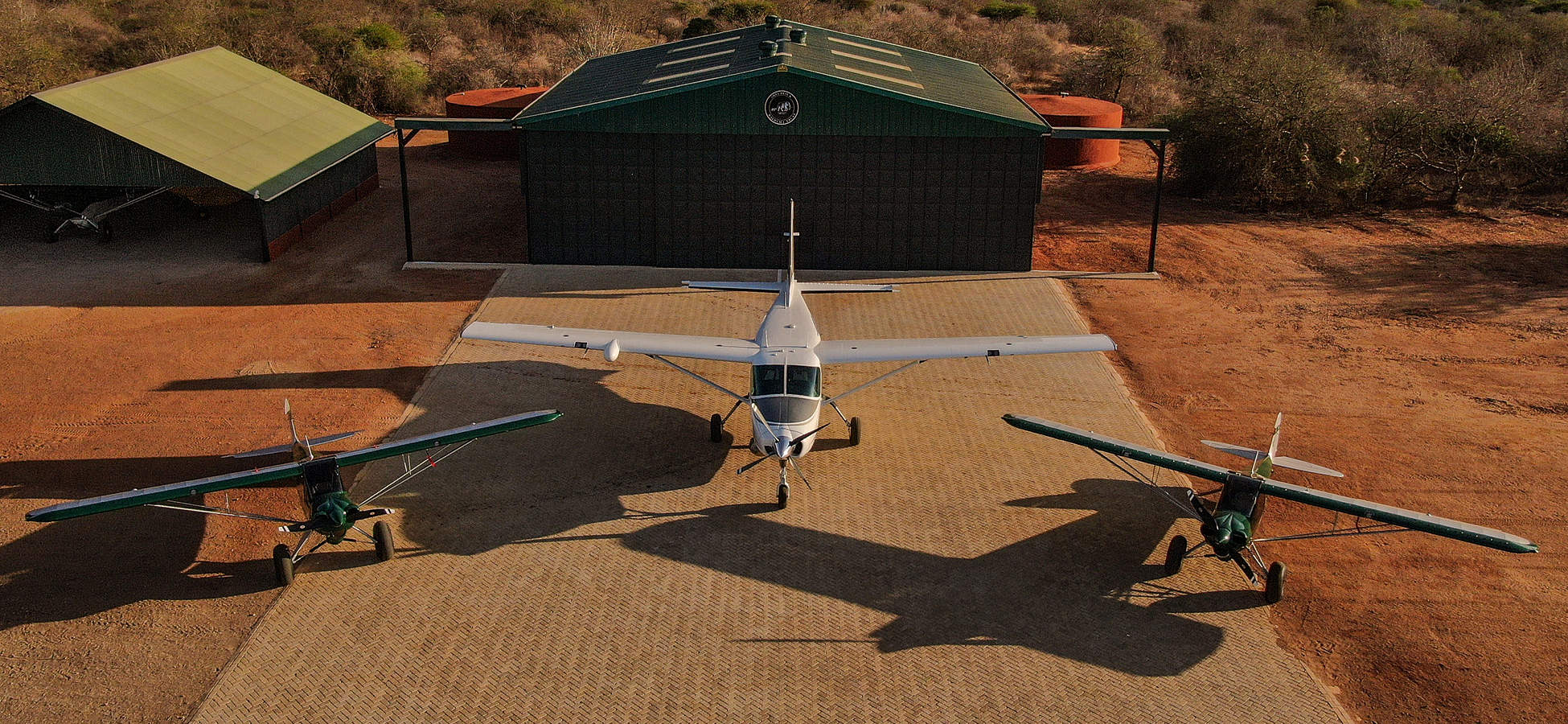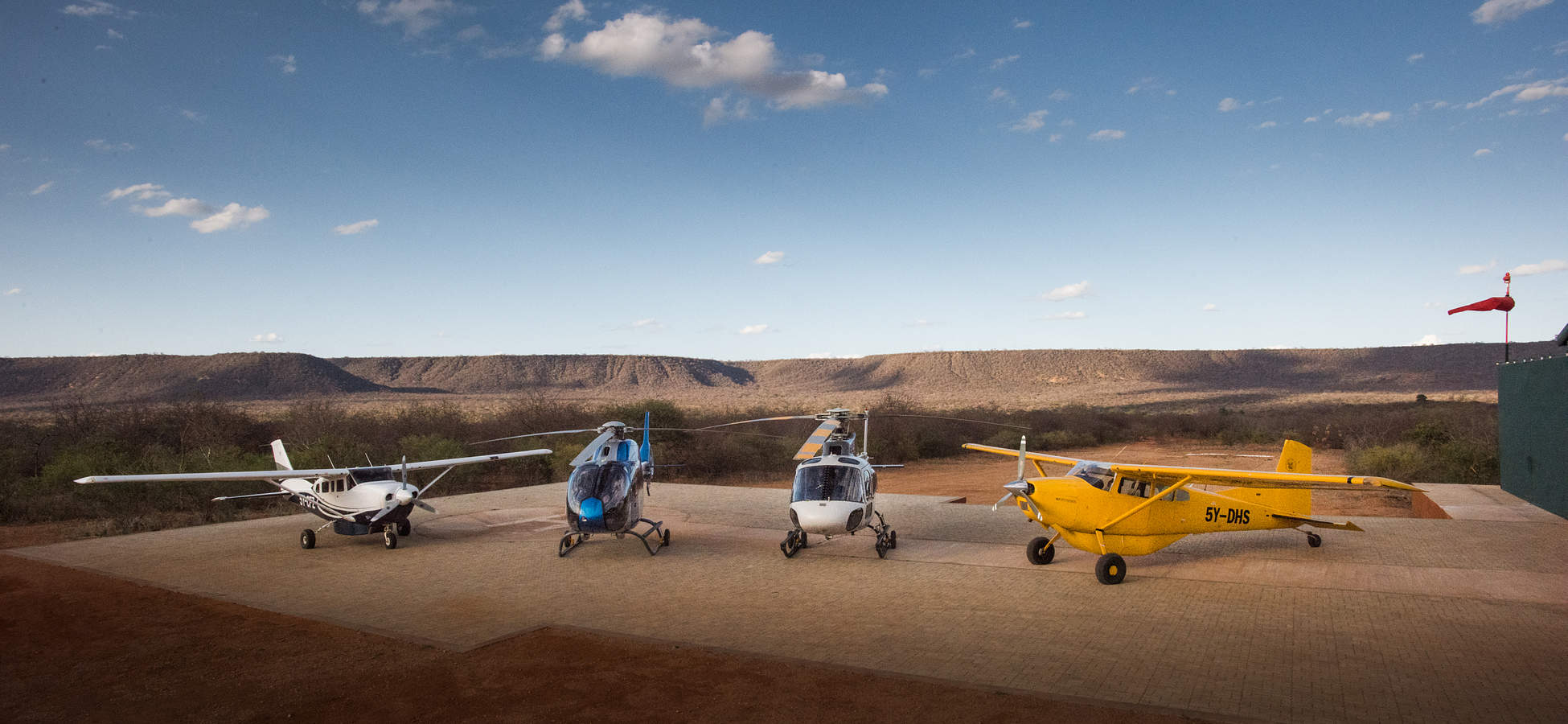Enhanced safety features, greater visibility, shorter take-offs & landings, and the ability to fly slower, faster and further than its predecessors, make the EX3 an ideal plane for wildlife monitoring and habitat surveillance
Aerial Operations
Monitoring for illegal activity from the skies and providing a vital, rapid response to all manner of field operations
Our Aerial Unit patrols daily to monitor wildlife and deter illegal activity, while offering rapid response assistance to anti-poaching activities, incidents of human-wildlife conflict and veterinary operations in the Tsavo Conservation Area and Lamu District.
319,380 kms
Flown in 2024
8
Fixed-wing aircraft
4
Helicopters
Eyes in the sky
Aerial operations and surveillance is needed now more than ever in an effort to curb ivory, bushmeat and rhino horn poaching, mitigate human-wildlife conflict and tackle broader threats to wildlife and habitats as a whole. It’s a vital tool and our eyes in the sky support our active ground teams in preventing illegal activities and apprehending poaching offenders. In addition, our Aerial Unit are on hand to help save the lives of many injured elephants and other wildlife species, not easily identified on foot by our ground teams.
Aerial Unit
Flying an average 220 hours, covering a distance of around 27,900 kms, each month, our Aerial Unit takes part in daily security patrols, veterinary interventions for injured elephants and wildlife, search and rescue operations for orphaned elephant calves, firefighting, human-wildlife conflict mitigation and emergency medevacs. Our Unit currently consists of 8 fixed-wing aircraft and 4 rapid response helicopters, ensuring an immediate response to incidents and providing us the ability to deploy rangers and the SWT/KWS Canine Unit into the field.
Support our aerial operations
We currently operate twelve aircraft for wildlife protection

5Y-STB (Carbon Cub EX3)
5Y-STW (Cessna Caravan 208)
The ‘Baby’ Caravan can fly safely in most weather conditions, undertake night operations and carry up to ten passengers, or an orphaned elephant. It’s a pivotal aircraft in vet treatments, animal rescue, canine and personnel deployment, and medevacs
5Y-STR (Carbon Cub FX3)
Enhanced safety features, greater visibility, shorter take-offs & landings, and the ability to fly slower, faster and further than its predecessors, make the FX3 an ideal plane for wildlife monitoring and habitat surveillance

5Y CFZ (Cessna 206)
This turbo charged aircraft is capable of carrying five passengers plus the pilot and can fly at altitude with excellent endurance capabilities. Often called into action to transport a vet, his assistant and equipment.
5Y CXT (Airbus helicopter H120)
Offers quiet economical surveillance flying, ideal for patrolling, responding to human-wildlife conflict cases and the deployment of rangers. Able to land in taller vegetation and has a capacity to carry up to four passengers plus a pilot, or medical evacuation cases.
5Y CXP (Airbus helicopter H125 B3+)
A versatile and powerful machine that can be used to carry five passengers plus a pilot. It can transport rescued elephants, ferry long line heavy equipment and carry water for firefighting. It comes with medivac accessories so can be deployed in case of emergencies.

5Y-DTP (CC-18 Top Cub)
Able to fly slowly without stalling and undertake tight turns, it's perfect for any kind of surveillance, searching for illegal activities and locating injured animals.
5Y-TRA (PA-14 Piper Family Cruiser)
Larger than a Super Cub, it can economically transport up to 4 members of our field teams (including the pilot) to our field projects to carry out essential maintenance and monitoring work.
5Y-STP (PA-18 Super Cub)
The slow speeds and manoeuvrability of this aircraft make it ideal for surveillance. The large Alaskan bush wheels ensure it can take off and land virtually anywhere.
Read the latest monthly reports from our Pilots






















